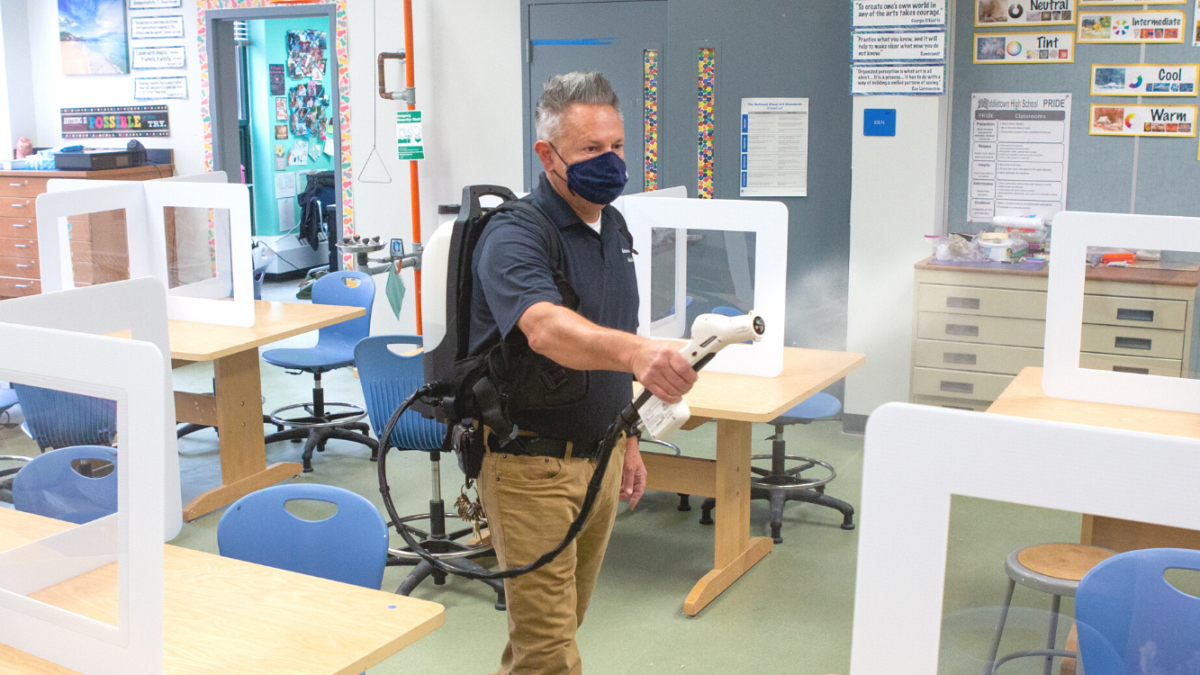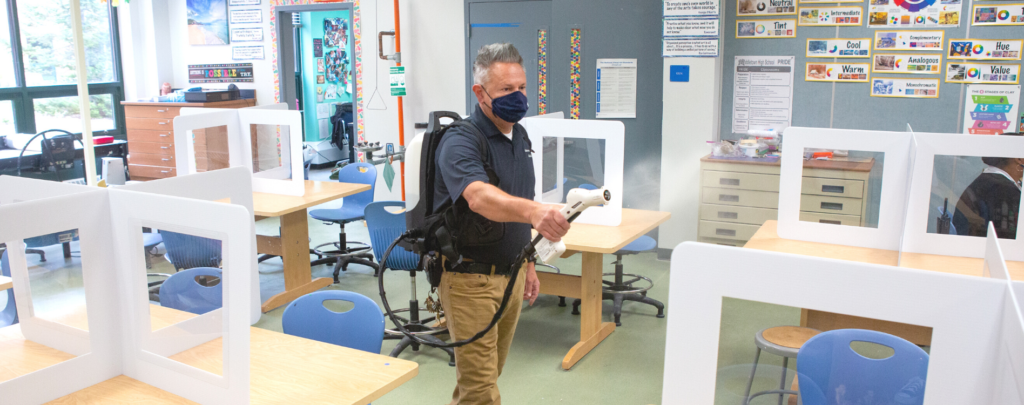USGBC/ASHRAE study shows air quality measures implemented by schools during the pandemic

School districts representing 4,000+ schools indicated their protocols and operations plans to mitigate the spread of Covid-19. Image courtesy USGBC
Only known national view of implementing air quality measures in schools during the pandemic
The Center for Green Schools at U.S. Green Building Council (USGBC), with technical support from global building technology society ASHRAE, recently released survey results from school districts across the country, detailing the measures they have taken to improve indoor air quality (IAQ) in school buildings in response to the COVID-19 pandemic. The responses cover more than 4,000 schools serving 2.5 million students in 24 states.

“Indoor air quality continues to be a critical concern as more teachers and students are returning to the classroom,” said Anisa Heming, director of the Center for Green Schools at USGBC. “Increasing clean air circulation for our teachers and students is vital to promoting public health and is a key green building strategy for school buildings. Our aim with this report is to inform policymakers and nonprofits that support our schools of the challenges that our education institutions face in combating the spread of COVID-19, particularly given the deficient state of many school buildings across the country.”
The report is the only known national view of air quality in schools during COVID: what school districts have prioritized, which actions they have taken, how they have made decisions, and what the consequences have been. The results of the survey show that schools have implemented some protective measures to improve IAQ, prioritizing ventilation and filtration to reduce the transmission of the virus. However, school districts still have unmet needs and face numerous challenges related to high costs and outdated building infrastructure.
“Maintaining proper ventilation and good indoor air quality are vital in keeping school buildings healthy and operating as energy efficiently as possible,” said 2020-21 ASHRAE President Charles E. Gulledge III, P.E. “This report provides a wide-scale, foundational framework to school leaders and lawmakers alike towards the implementation of new building design guidelines and to advance health and sustainability goals, while instilling confidence in the places where people learn.”
Additional findings from the survey include:
• The most-frequently cited challenge to implementing protective air quality measures at schools was that school buildings were not designed to support the strategies that were being recommended.
• School districts that have been able to act have leaned heavily on their mechanical systems, such as increasing air supply through HVAC systems or upgrading filters to implement protective air quality measures for students and teachers.
• Only two-thirds of respondents were regularly monitoring IAQ before the pandemic, indicating that providing time, staff, and funding for regular monitoring and data collection has not been a priority for many districts in the past.
• Respondents want to continue the measures implemented during the pandemic, citing student and teacher health. Seventy percent of school districts plan to continue some or all of the strategies they’ve implemented.
This past spring, President Biden signed the $1.9 trillion American Rescue Plan into law, which includes close to $130 billion for K-12 education, as well as a number of other provisions that will affect schools. The funding headed to schools represents an enormous opportunity to support student needs during the ongoing pandemic and to address persistent inequities.
“Schools can use federal funds for a variety of items relevant to the building industry and green building, including school building improvements that reduce risk of virus transmission and exposure to environmental health hazards,” added Heming. “Many green building strategies support the implementation of public health guidance and maintaining the operation of and continuity of services at schools, both allowable uses of the funding. The Center for Green Schools at USGBC is here to help facilitate safe and healthy spaces for our K-12 children.”
To learn more, download the full report: Preparation in the Pandemic: How Schools Implemented Air Quality Measures to Protect Occupants from COVID-19.
To learn more about the future of school buildings and LEED, register to attend the 2021 Green Schools Conference.
